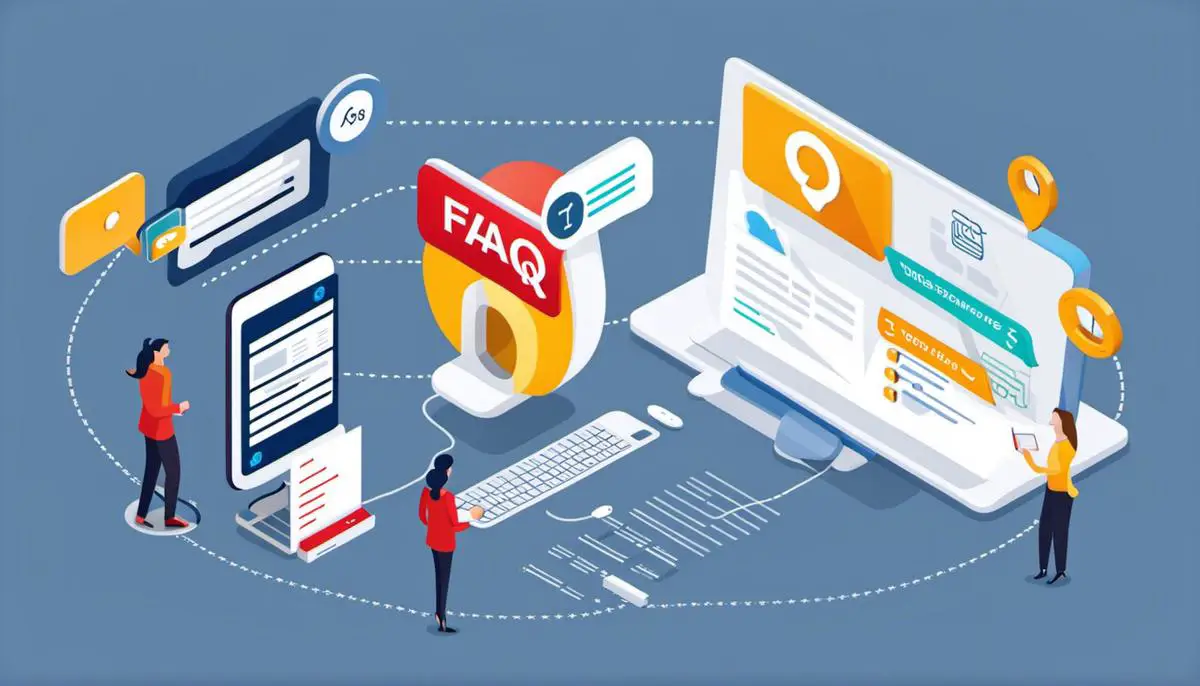In today’s digital age, a website serves as not only a platform to showcase your products or services but also as a hub for customers to gather information and resolve their queries. One pivotal feature of this information hub is the ‘Frequently Asked Questions’ or FAQ page, a dedicated section aimed at providing quick, concise answers to common queries. The value of an effective FAQ page extends beyond mere user convenience; it plays a role in improving SEO ranking, enhancing the user experience, and aiding in reducing the workload of customer service. This guide will dive into the strategy behind designing a robust FAQ page, starting from identifying your customer’s most pressing inquiries, to arranging your FAQ page in a coherent and easy-to-navigate manner.
Understand the Purpose of FAQs Page
Understand the Importance of FAQs Page
An FAQ (Frequently Asked Questions) page is important for several reasons. Primarily, it serves as a resource for visitors to easily find answers to common questions about your products, services, or other aspects of your business. This targeted information can enhance the user experience by eliminating confusion, and providing clarity, strengthening the relationship between your business and its consumers.
How FAQ page Enhances User Experience
An FAQ page can make a significant difference to your website’s user experience. It seamlessly addresses both simple queries and complex issues, regarding your products or services. This helps in fostering customer trust and confidence, as they know they can find immediate solutions and information on your website. By doing so, you’re developing a more accessible platform for your users, providing them the information they need to make an informed decision or resolve an issue.
FAQ page Benefits for SEO Ranking
When constructed and optimized properly, FAQ pages can play a significant role in improving a website’s SEO ranking. They provide an excellent opportunity for integrating relevant keywords naturally into your website content. Moreover, by answering common questions related to your business domain, you’re likely to attract more organic search traffic. Search engines favor websites that provide comprehensive information and answer user queries effectively, improving your page rank.
Reducing Customer Service Queries through FAQ page
An effectively compiled FAQ page can also serve as the first line of customer service, potentially reducing the volume of customer service queries. Answering common questions publicly means users may not have to reach out to under-pressure support services, ensuring a quicker resolution. This not only reduces the workload for your customer service team but also enhances customers’ overall experience by providing swift solutions to their problems.
Driving Business Goals Using FAQ page
Don’t overlook the potential of an FAQ page as a strategic element in meeting business goals. Beyond simply reducing inbound queries, a well-designed FAQ page can act as a powerful conversion tool, helping to move customers through the sales funnel by addressing their concerns or objections. By strategically positioning the selling points of your products or services in response to pertinent questions, you could inspire potential customers to take the desired action.

Identify Commonly Asked Questions
Identify Commonly Asked Questions
The first step in setting up an effective FAQs page is to identify the questions that are most commonly asked by your users or customers. This process requires a multi-pronged approach to ensure you capture the full range of potential queries.
Start by reviewing customer service records thoroughly. Customer representatives are on the front lines of answering questions and resolving issues, and their records will often shine a light on common themes and concerns. Assess these records for repeating topics and questions, then note them down.
Include in your process of identifying frequently asked questions an analysis of website analytics. Engagements on your website – especially traffic patterns, search queries, and bounce rates – can offer valuable insights into what information users are trying to find. Users tend to leave web pages quickly when they can’t find the information they need, and commonly searched phrases could indicate recurring questions that need to be addressed.
Lastly, gather input from other people who regularly communicate with your users or customers. This includes not only sales and service teams but also other areas like marketing and operations. They are likely to have direct interactions with customers and might have noted recurring questions or issues that customers raise. Encourage them to share their experiences.
Together, these three steps will provide a robust and comprehensive list of questions for your FAQs page. Always remember, the goal of your FAQs page is to make information readily available and easy to understand for all users and customers. So, the more effort you put in identifying commonly asked questions, the more effective your FAQs page will be.

Design and Organizational Best Practices
Planning Your FAQs Page
Effective FAQ setup begins with planning. Start by brainstorming potential questions your users may ask, including those regarding your products, services, billing, support, login issues, and more. Consider asking your customer service and sales teams about common questions they receive. Classify these questions into logical groups based on topic, such as product information, shipping and returns, privacy policy, etc.
Grouping Related Questions
Your FAQ page should be easy to navigate. Sort questions by relevance and group related questions together under an appropriate heading. This will allow users to browse through the different sections to quickly find the information they need.
Design: Collapsible Sections and Other Features
Incorporate collapsible sections into your FAQ page’s design for improved user experience. Collapsible sections, meaning sections that expand when clicked, will allow you to display loads of information in an organized, minimalistic manner, without overloading the page. Each question can be a collapsible element, allowing users to click to reveal the answer. This makes it easy even for users dealing with long lists of FAQs.
Including a search bar is an often-overlooked feature that can greatly improve the efficacy of your FAQ page. By providing a search bar, you enable your users to type in their questions or keywords and swiftly find the information they need.
Linking to More Detailed Information
To keep your FAQ page’s answers concise, link each answer to more detailed information elsewhere on your site. This allows those who need extra detail to access it easily, while keeping the FAQ page clean and easy for others to browse.
Ongoing Modification and Updating
Your FAQ page should be flexible and open to ongoing modification. As your products or services evolve, your FAQs will need to be updated correspondingly. Making these periodic changes ensures your customers always find the most current and accurate information.
Simplicity and Clarity
While designing and maintaining your FAQ page, remember the key aspects are simplicity and clarity. Keep the language of the questions and answers straightforward. The purpose of this page is to answer questions, so make sure that the answers are understandable for everyone.

The process of creating an effective FAQ page is as strategic as it is analytical, requiring a careful balance of understanding customer needs and implementing design best practices. With proper execution, your FAQ page can evolve into more than just a question and answer platform. Organized logically, with collapsible sections, search features, and logical grouping of related queries, it transforms into a navigable knowledge base that users can explore effortlessly. Remember, the ultimate goal is to create a user-friendly experience that not only mitigates customer service queries but also improves user satisfaction, and in turn, your SEO ranking. Treat your FAQ as a living, evolving entity, constantly updating and improving, just like your product or service.
